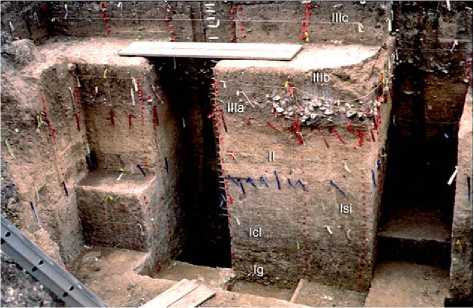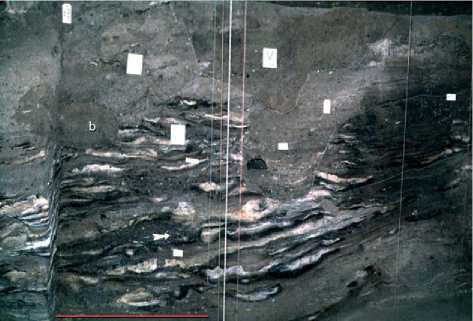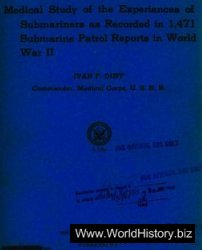Methods of investigating site formation depend on the nature and scale of the site and the types of questions being asked. Nevertheless, site formation is best understood first with a thorough understanding of the geomorphological setting of the site, including position in the landscape, types of bedrock and Quaternary deposits, as well as knowledge of soils and sediments near the site. Such investigations are

Figure 6 Site of Wilson-Leonard, south central Texas showing stratigraphic sequence of deposits that span from Early Palaeo-indian at the base (c. 11 300 BP) up to Late Prehistoric at the top (c. 1000 BP). The sequence here consists of fluvial gravels at the base that are overlain by interfingering cienega, organic rich silty clays (Icl) and overbank silts (Isi), stony colluvial and alluvial silts (II) that become successively rich in organic matter and rocks resulting from the use of anthropogenic rock ovens dating to Archaic through Late Prehistoric Periods (IIIa, IIIc); a more geogenic, less anthropogenic silt (IIIb) separates these two oven-rich layers.

Figure 7 Middle Palaeolithic anthropogenic deposits about 50 ka from the West wall of Kebara Cave, Mount Carmel, Israel. The bulk of the deposits are intact combustion features comprised of ashes and organic-rich layers. In this part of the cave, all of the ashes have been diagenetically altered from their original carbonate composition, and instead are composed of various phosphate minerals; no bone occurs in these altered deposits. In the upper part of the photograph the well-defined structures disappear and the deposits are more homogeneous. Such homogenization is a result of bioturbation, presumably by micromammals, and an elliptical burrow is shown in the upper left part of the photograph (b). Red line is 1 m.
Usually carried out with the aid of satellite and aerial photography, maps (topographic, geological, soil survey), and geophysical techniques (e. g., magnetometry).
In the laboratory, grain size analysis has traditionally been used to scrutinize these processes. Within the past two decades this approach has been supplanted By soil micromorphological techniques, including the thin section analysis of undisturbed sediments and Transform soils using the petrological microscope, coupled with scanning electron microscopy (SEM), X-ray analyses (e. g., microprobe and X-ray diffraction), and Fourier Transform infrared (FTIR) spectrometry, which are effective means to examine microchemistry and mineralogy (Figures 4 and 5). Bulk chemical (organic matter, phosphate, trace elements) and physical (bulk density, magnetic susceptibility) analyses (Figures 2 and 3) are also often utilized to determine, and/or corroborate independently, depositional and postdepositional processes (see Soils and Archaeology). For example, soil micromorphology of the high medieval deposits in the precincts of Magdeburg Cathedral, Germany, found burned and ash-rich deposits formed under open-air conditions, which included nonferrous metal fragments. This was consistent with an enhanced magnetic susceptibility (induced by burning) and the enriched copper content found in the associated bulk sample. Complementary microprobe and archaeo-metallic analyses on the thin section identified the fragments as corroding bronze alloy fragments composed of copper and tin, which contained the appropriate amount of lead required in bells. This supplied an inferred link between these deposits containing bronze casting droplets and supposed local medieval bell manufacture for the Cathedral.




 World History
World History









